
SPECIES
There are five species of rhino: white rhino (Ceratotherium simum), black rhino (Diceros bicornis), greater one-horned rhino (Rhinoceros unicornus), Sumatran rhino (Dicerorhinus sumatrensis), Javan rhino (Rhinoceros sondaicus)
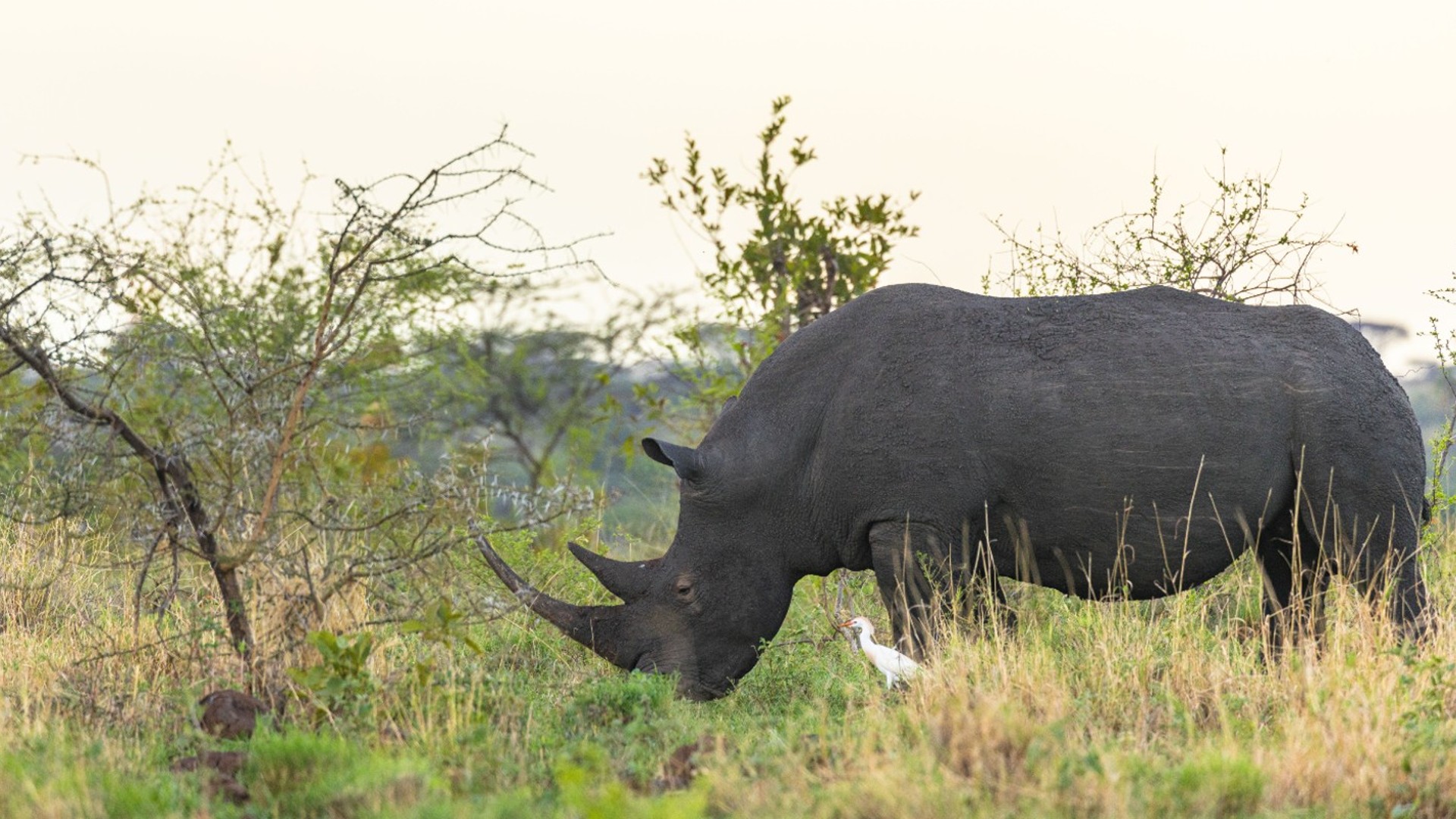
Family: Rhinoceridae
Their feeding behaviour helps maintain savannah habitats and boosts the diversity of rainforests by creating openings in the canopy, allowing for new growth. Because rhinos have relatively large ranges, by protecting them and their habitat, it is possible to safeguard large numbers of other species.

There are five species of rhino: white rhino (Ceratotherium simum), black rhino (Diceros bicornis), greater one-horned rhino (Rhinoceros unicornus), Sumatran rhino (Dicerorhinus sumatrensis), Javan rhino (Rhinoceros sondaicus)

Black rhino, Javan rhino, Sumatran rhino: Critically Endangered / white rhino: Near Threatened / greater one-horned rhino: Vulnerable

Black rhino: ~5,630* (3,142 mature individuals), increasing / Javan rhino: ~68* (~18 mature individuals), stable ️ / Sumatran rhino: ~80* (~30 mature individuals), decreasing / White rhino: ~18,064* (~10,080 mature individuals), decreasing️ / greater one-horned rhino: ~3,588* (~2,100-2,200 mature individuals), increasing️
* According to the International Union for the Conservation of Nature (IUCN)

Black rhino – 2020; Javan rhino – 2019; Sumatran rhino – 2019; White rhino – 2020; greater one-horned rhino – 2018

Herbivorous

Grassland plains, savannah, woodland, in true tropical forests and in swamps

Black and white rhino are only found in Africa. Indian, Sumatran and Javan rhino are found in Asia

Weight – 600-2,700 kg, body length – 2-3.8m, shoulder height – 1-2m

Poaching, habitat loss, disease
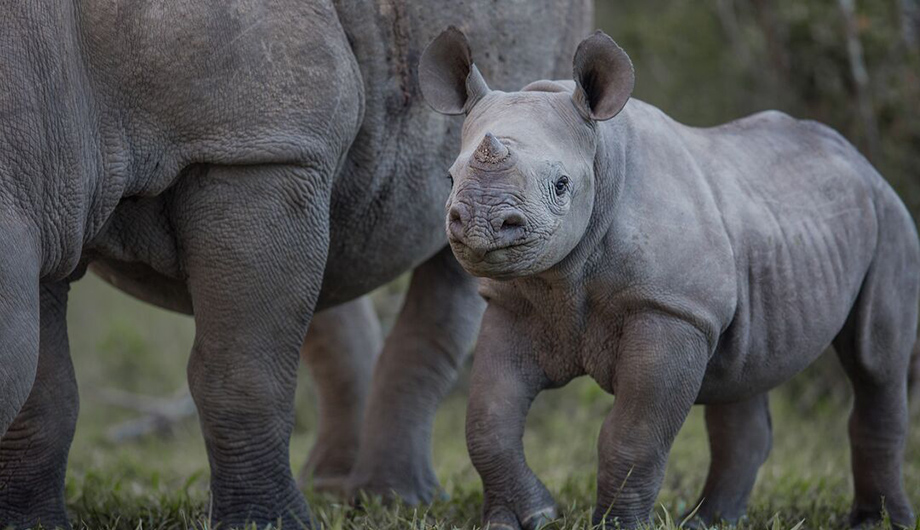
In Africa, an oxpecker bird can often be found hitching a ride with a white or black rhino. They have a mutually beneficial relationship. The oxpecker eats the insects and ticks that live on rhinos, while the rhinos, who have poor eyesight, can be alerted to danger – specifically humans – by the oxpecker. In Swahili, the oxpecker is known as the ‘Askari wa kifaru’, literally meaning the rhino’s guard.
Rhinoceros belong to a group known as the perissodactyls, or odd-toed ungulates, which includes horses and tapirs. All species can weigh more than a tonne and have one or two horns.
Each rhino species has a slightly different appearance. Black and white rhinos are both actually grey but can be distinguished by their different lip types adapted due to their specific diets.
Black rhinos are browsers, feeding from bushes and trees rather than ground vegetation – they have a pointed or hook like lip to help them do this. The white rhino is a grazer with a square lip, adapted to eating grasses. The Sumatran rhino is unique as it has shaggy hair on its ears and body and is the only two horned rhino in Asia. Javan rhinos are recognisable by their skin folds which look like plated amour.
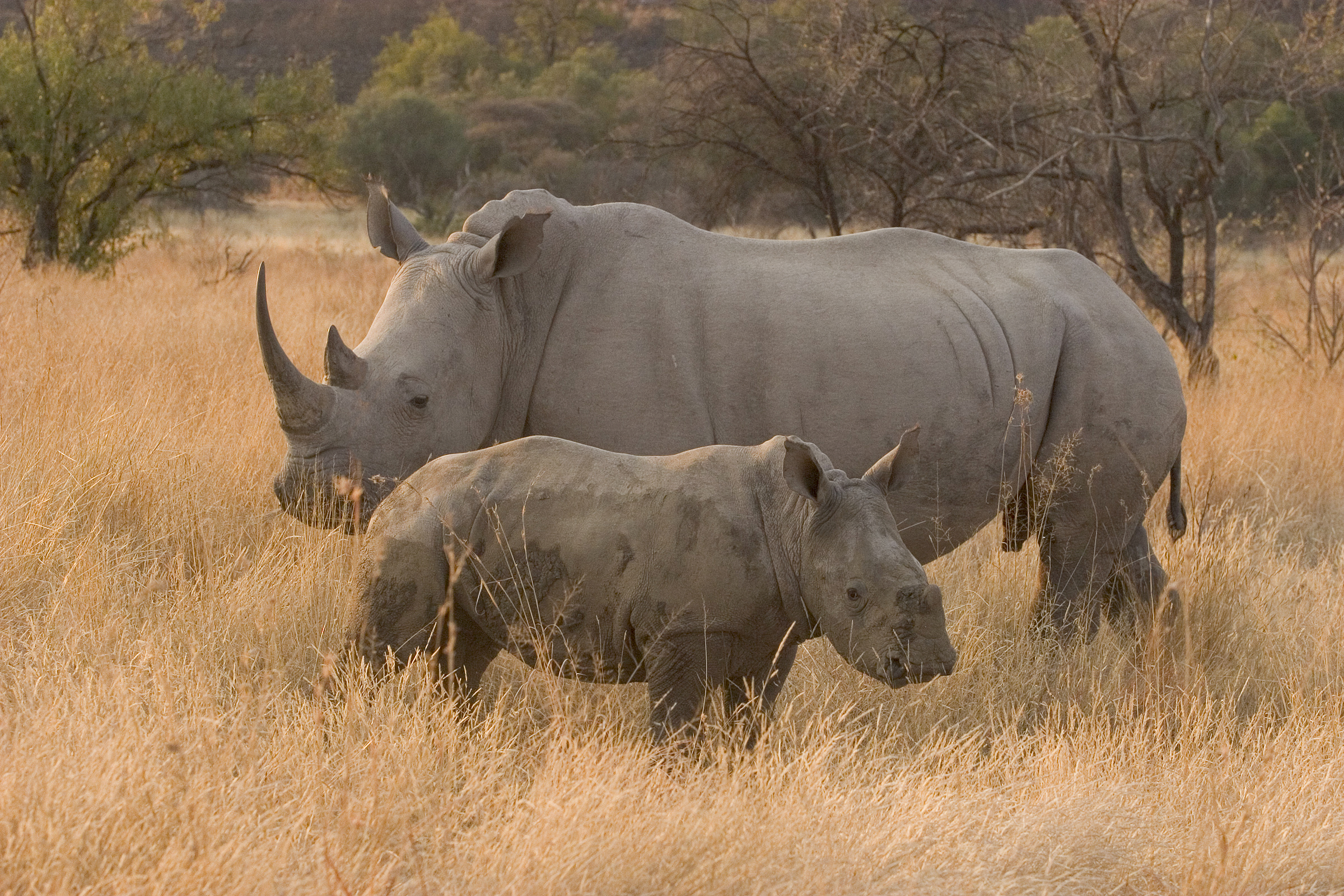
A mother rhino and calf
Most rhino species lead largely solitary lives although they will sometimes share feeding grounds, water holes and wallows. The closest relationship is between a mother and her calf, who stay together between two and four years. As calves mature they leave their mothers and may join other females and their young temporarily, before living completely on their own. Males are territorial to varying extents, often marking their territory with dung.
Rhinos, especially black rhinos, can appear rather ill-tempered – particularly in areas where they are hunted or regularly disturbed. They have poor eyesight, which might explain why they sometimes charge without apparent reason. They have an extended vocabulary of growls, grunts, squeaks, snorts and bellows.
Wild rhinos have a lifespan of 30-50 years. Pregnancy lasts 15-16 months and the 63kg newborn calf relies on its mother’s milk for up to two years.
African rhinos, which includes the white rhino and the black rhino, are found in savannahs, forests and shrub habitats. The greater one-horned rhino lives in the grasslands, swamps and forests of India and Nepal. The Javan rhino is found in lowland tropical rainforest close to water sources. The Sumatran rhino, which also lives in Indonesia, inhabits tropical rainforests and mountain forests.
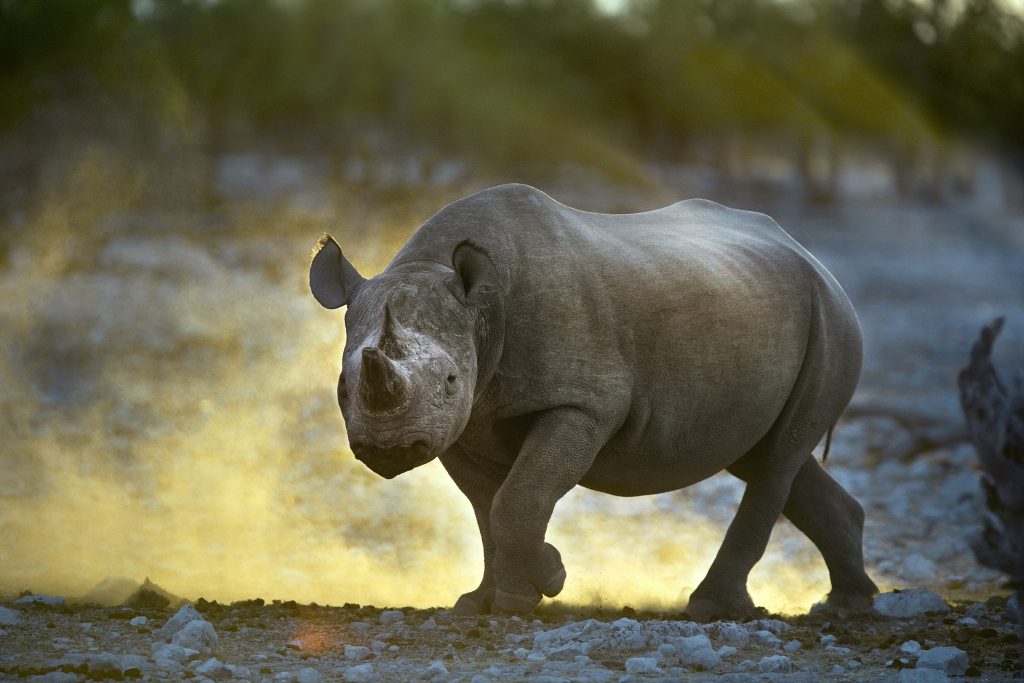
A black rhino © George Logan
Rhino habitats are encroached on by human population growth, agricultural development and domestic livestock. Rhino habitat loss is a serious problem because they are slow and sensitive breeders and when their land is severely fragmented populations become smaller and more isolated, making it even more difficult for them to reproduce.
Non-native species are also reducing the quality of habitat, particularly for the Indian, Sumatran and the Javan rhino habitats. These species are already at incredibly at risk because their populations occur in only one or a few sites.
Illegal hunting for sport and rhino poaching has led to a dramatic fall in rhino numbers. Reasons for rhino poaching include the use of their horns in traditional Asian medicine.
Northern white rhino poaching, combined with civil wars, has devastated their population, leading to functional extinction. This meant that it is too late to save the northern white rhino – there is no longer a viable population as only two female northern white rhinos are known to survive in the world and the last male died in 2018.
Infectious diseases transmitted by livestock encroaching into protected areas presents a risk to small populations such as the Javan and Sumatran rhino.
Due to the small populations of greater one-horned rhinos, Javan rhinos and Sumatran rhinos the risk of inbreeding is high.
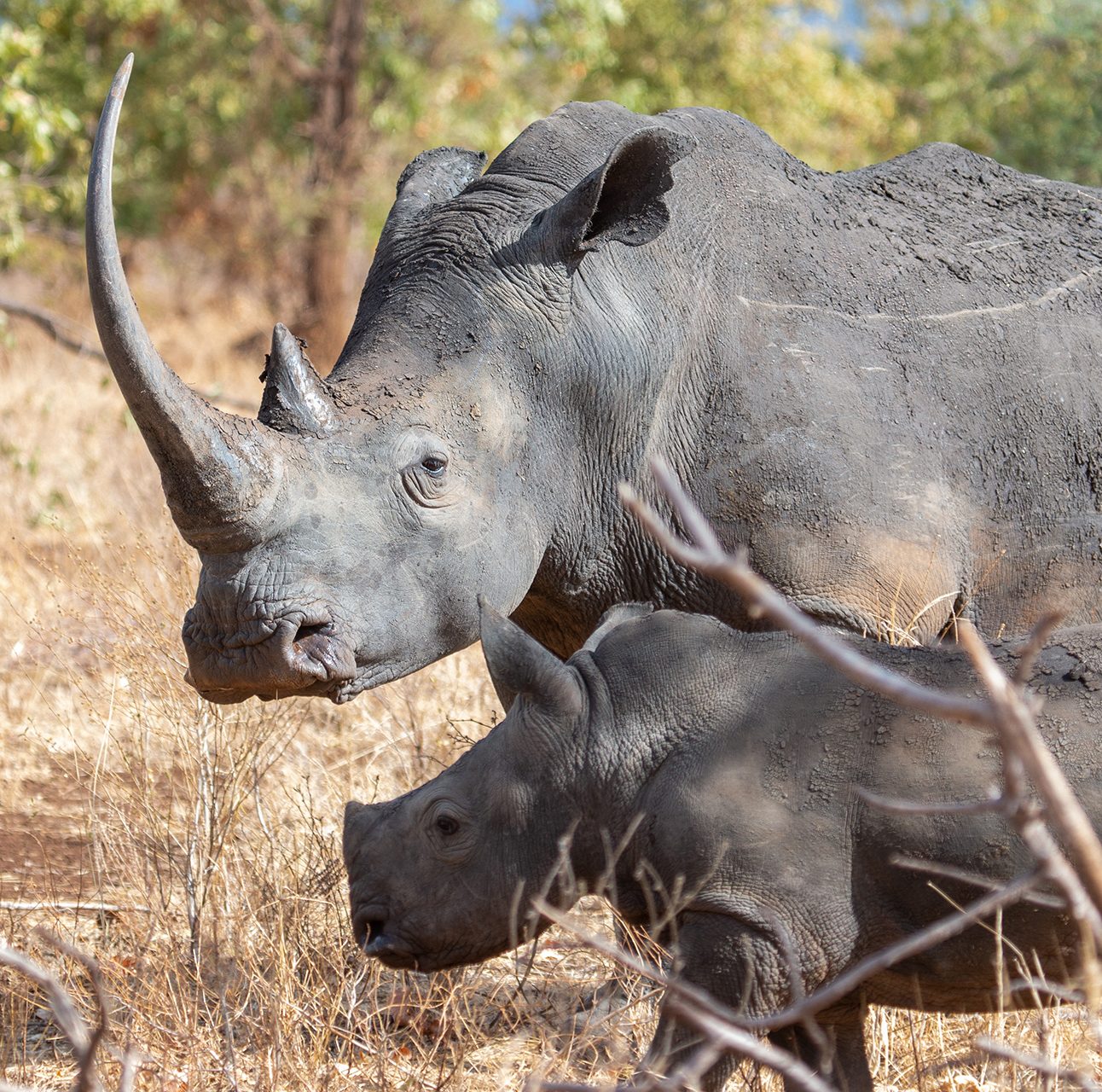

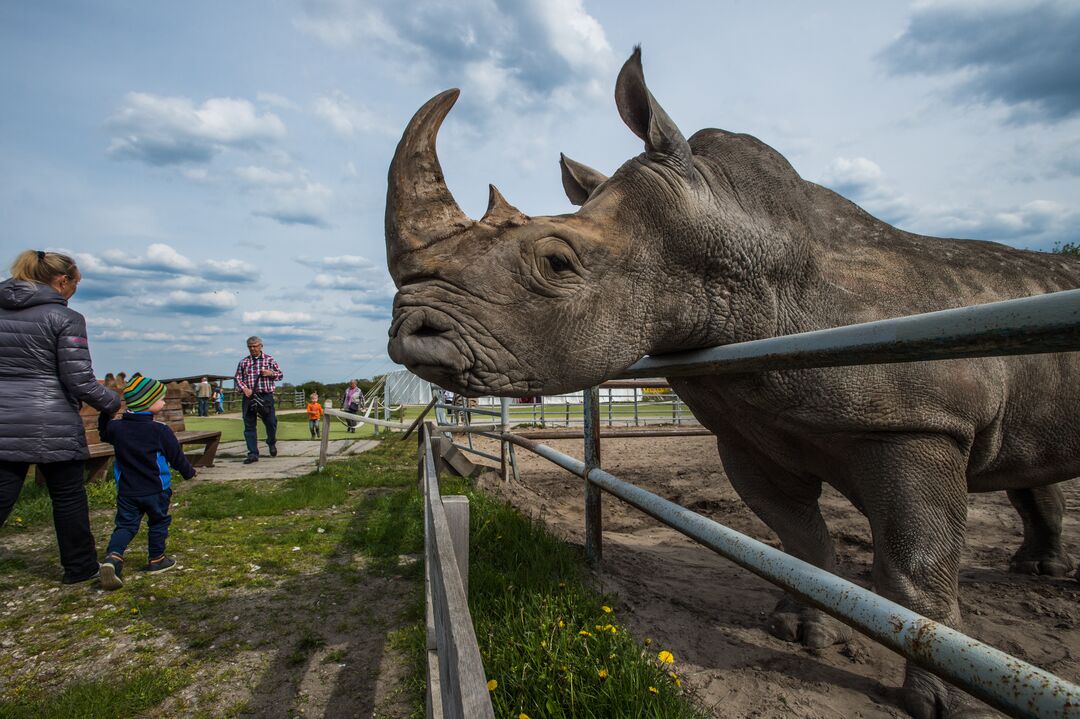
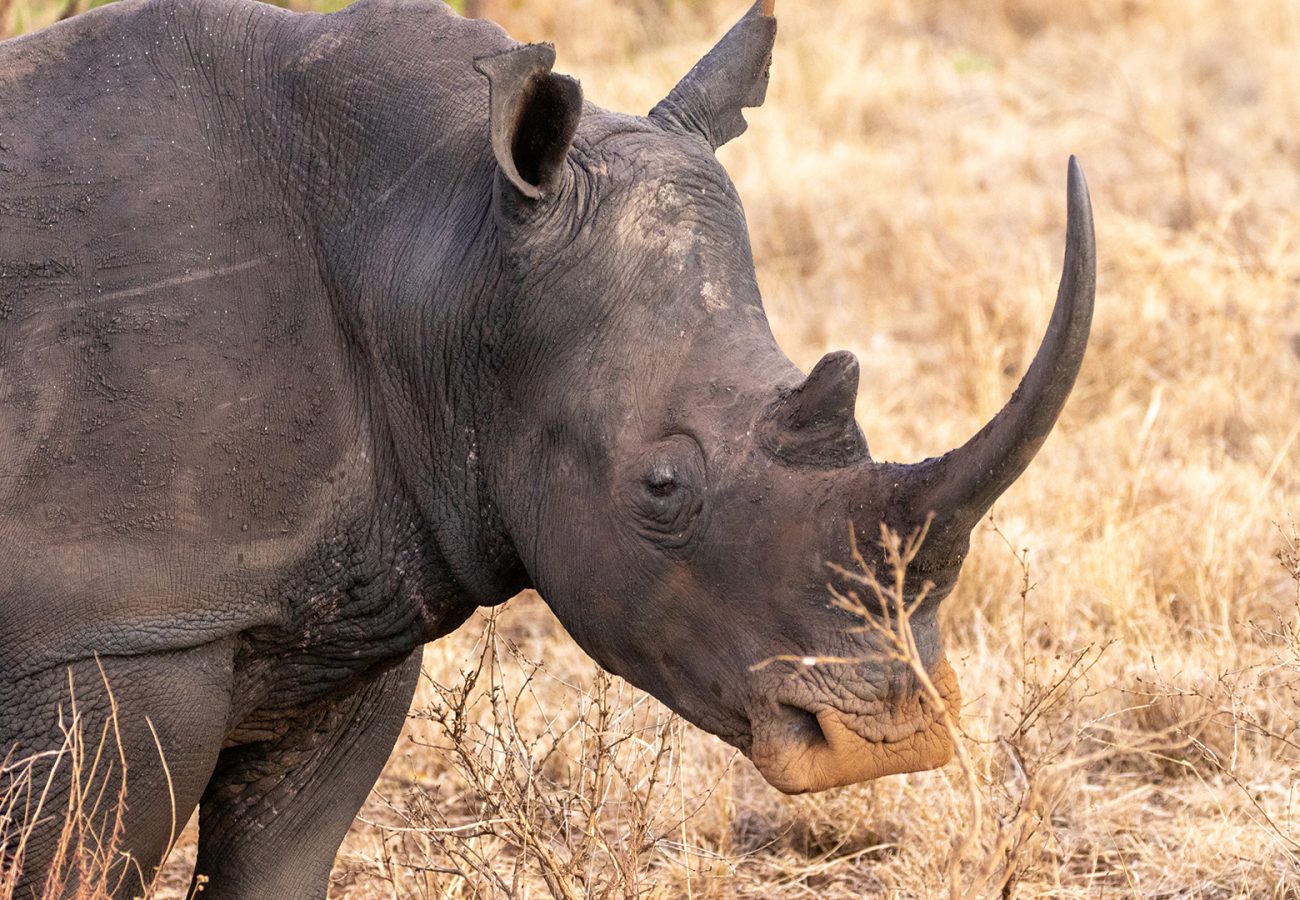
Adopt a rhino with Born Free today, to help fund both our conservation and campaigning work to secure a better future for this critically endangered animal.